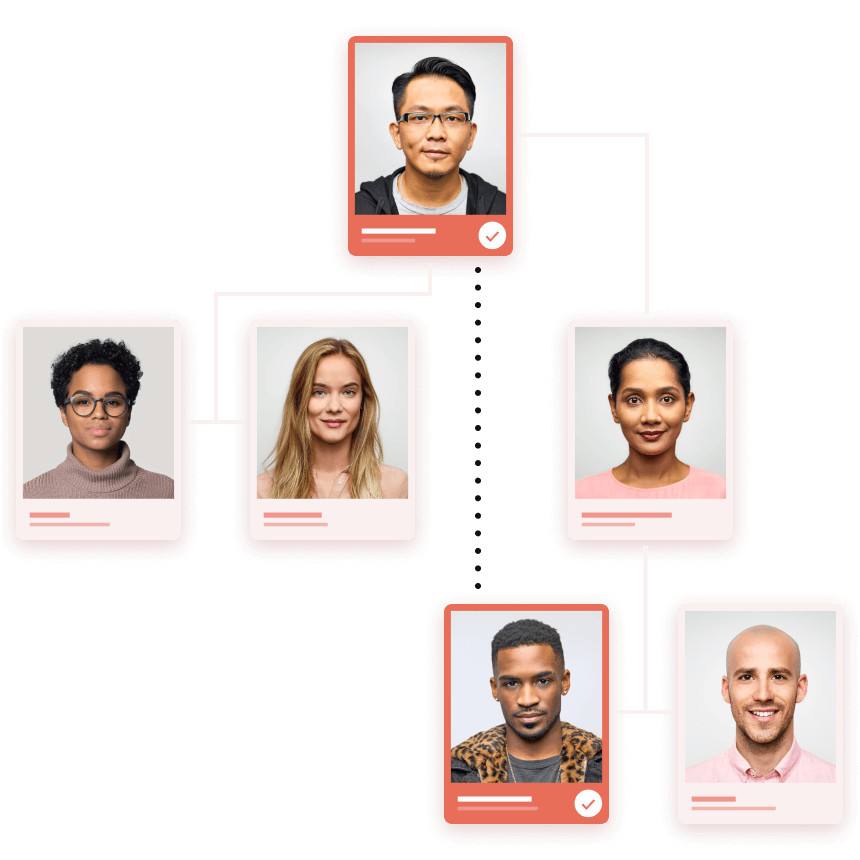
Skip tracing basic techniques and advanced solutions
Skip tracing describes the search for someone who has disappeared. Although skip tracing is often associated with the pursuit of a debtor who has departed a last known address, skip tracing techniques are in fact used in a surprising variety of investigations.
Here we take a look at some of the basic steps and advanced techniques deployed in skip tracing investigations.
What is skip tracing?
Skip tracing is the process of locating someone who has ‘skipped’ or departed their last known address, changed their contact information or is otherwise difficult to find. As the name suggests, this is often – but not always – in a deliberate attempt to disappear, evade detection or responsibility.
Skip tracing deploys various techniques to track down individuals. This can include searching through public records, databases, social media platforms, tracing friends and family members, as well as utilising specialised skip tracing tools and software designed for the purpose. It requires a combination of investigative skills, access to information, and sometimes legal authority to locate individuals.
What is skip tracing used for?
Skip tracing is used in a variety of circumstances where locating an individual is necessary for financial, legal or investigative purposes.
Debt collection
One of the most common uses of skip tracing is in debt collection. As financial pressures mount, the most desperate debtors may choose to disappear. Skip tracing techniques are often deployed to locate people who owe money but have moved or changed their contact information without providing updates to creditors.
Asset recovery
Conversely, the same skip tracing techniques are often used to help find the rightful owner of unclaimed financial assets. Moving house, moving jobs, bereavement or marrying and changing your name can all result in assets being misplaced and mothballed. Whether it's a forgotten pension or shareholdings, skip tracing can reunite lost or dormant accounts and investments with their owners.
“Skip tracing is used in a variety of circumstances where locating an individual is necessary for financial, legal or investigative purposes.”
Missing persons
Law enforcement agencies and private investigators will often use skip tracing technology to locate missing persons. This can include individuals who have disappeared under suspicious circumstances, but might also include vulnerable people, including runaways, or those who have voluntarily gone off-grid.
Investigations
Skip tracing is commonly used in various other types of investigations. For example, in legal proceedings, locating witnesses, serving legal documents or finding people who are parties to a lawsuit. Also, in insurance Investigations – locating policyholders or verifying the authenticity of information provided by claimants.
Estatesearch
Estatesearch helps customers recover valuable lost accounts and investments. To simplify and speed up complex asset recovery investigations, Estatesearch need access to rich data sources to discover hidden links between individuals, organisations and property.
Estatesearch tackle tough tracing challenges with GBG Investigate

Basic skip tracing techniques
Effective skip tracing can combine simple and advanced techniques as well as some specialised technology. It requires a systematic search through complex information to locate individuals efficiently, as well as adherence to legal and ethical guidelines for data protection and privacy.
Database searches
Online databases that aggregate public records are often a first step for searches of an individual’s name, address, phone number, or other personally identifying information. For example, these searches can scan property data, motor vehicle registrations, professional licenses, court records and other publicly available information.
Social media monitoring
Social media will be among the first places to look. Platforms like Facebook, Instagram and LinkedIn can provide clues to someone's current whereabouts, activities, and connections. Skip tracers scour social media profiles for location indicators, employment status and updates from friends and family members.
Network targeting
Taking their investigations offline, skip tracers may interview friends, neighbours, coworkers, and other connections to a missing person. These interviews can also reveal useful information about the person’s current location, workplace and social circle which can sometimes be all it takes to help reconnect to someone who has gone missing.

Advanced skip tracing solutions
Advanced approaches to skip tracing help professional investigators analyse large amounts of data, identify links between people and places and more easily spot patterns. These techniques can help to locate individuals more efficiently while complying with legal and regulatory requirements regarding data privacy and confidentiality.
Data mining and analysis
Drilling down through large volumes of data can be daunting; advanced data mining techniques help investigators analyse ‘big data’ from diverse sources, including public records, social media and financial transactions.
Applying artificial intelligence, algorithms and other analytical filters can help to identify connections that speed up discovery. Machine learning algorithms can be trained on large datasets to recognize patterns and make predictions based on input data. Natural language processing algorithms can analyse unstructured text data, such as news articles and social media posts to extract relevant information and uncover valuable insights.
“Advanced approaches to skip tracing help professional investigators analyse large amounts of data, identify links between people and places and more easily spot patterns.”
Link analysis
Link analysis is a useful technique used to visually represent relationships between individuals, properties and businesses. Investigators create link graphs mapping connections between the person they are trying to locate and other people, places and organisations they are affiliated with. This link analysis helps to narrow down search areas and identify potential leads.
Geospatial analysis
Geospatial analysis focuses specifically on location as an organising approach to grouping and understanding data and can help investigators to identify location patterns and areas where the person they are looking for is likely to be located.
Geographic information systems (GIS) technology, for example, overlays powerful mapping capabilities on other information, such as address records, mobile data, GPS coordinates and other spatial data to understand the connections between them.
Predictive modelling
Predictive modelling is an advanced skip tracing technique that pushes historical data through statistical algorithms to forecast future behaviour. Investigators can develop predictive models based on data such as past movement patterns, financial transactions and social connections to anticipate where an individual might be located at a given time in the future.
Oxford City Council
The Counter Fraud Investigation team at Oxford City Council are tasked with ensuring that essential council services, such as the Right to Buy social housing, are targeted at citizens with the greatest need and that public funds are protected from fraudulent applications.
GBG Investigate helps Oxford City Council prevent millions in fraud

Legal and ethical aspects of skip tracing
Skip tracing is an essential process, applied to locate individuals for legitimate purposes such as, debt collection, asset recovery, legal proceedings and locating missing persons. In all skip tracing investigations, it is essential that investigators conduct searches ethically and in compliance with data protection laws and regulations.
To ensure transparency, investigators should maintain accurate records of the data sources and skip tracing methodologies deployed and any communications or interactions with the individual being sought.
How can GBG Investigate help skip tracing?
GBG Investigate is the leading skip tracing and identity investigation solution in the United Kingdom; it has one of the largest collections of independent data sets covering the UK population. This wealth of UK data can be combined with proprietary customer data and interrogated with GBG Investigate’s intelligent search capabilities.
Revealing hidden connections
GBG Investigate’s interconnected data architecture is designed to analyse and resolve records that relate to the same person, revealing hidden links to other contacts, addresses, people and businesses. Sophisticated visual graph technology then shows these connections and relationships, helping to precisely focus skip tracing investigations.
Single searches can quickly surface contemporary and historical results, connecting individuals to people and places using as little information as a partial name or address, phone number or email. Batch search results benefit from GBG Investigate’s internal identity scoring system, separating genuine identities from fakes to prioritise further investigation.
GBG Investigate reveals hidden links between people, businesses and property

Managing compliance with Investigate
We ensure that GBG Investigate delivers accurate data, accessible only with strict adherence to data protection laws and regulations. Our commitment to accuracy ensures that GBG Investigate customers can trust the reliability of the information they access, while data records are only made available within legally sanctioned investigation parameters.
This commitment to data protection is backed up by Investigate’s robust data auditing processes, helping investigators to track and monitor data use to ensure transparency and compliance with ethical and legal standards.
If your business relies on successful skip tracing investigations in the search for someone who has disappeared, or you need to reveal hidden links between people, businesses and property to prevent fraud, contact the GBG Investigate team.
Frequently asked questions
What is skip tracing?
Skip tracing is the process of locating someone who has ‘skipped’ or departed their last known address, changed their contact information or is otherwise difficult to find. As the name suggests, this is often (but not always) in a deliberate attempt to disappear, evade detection or responsibility.
Is skip tracing legal?
Skip tracing is a legal practice when conducted within the bounds of the law and with respect for individuals' privacy rights. It is carried out by investigators to locate and reconnect with individuals for legitimate purposes, such as debt collection, asset recovery, legal proceedings, or in the case of missing persons.
Who uses skip tracing technology?
Skip tracing technology is used in a variety of circumstances where locating an individual is necessary for financial, legal or investigative purposes. This can include debt collection and asset search and recovery agencies, legal firms and law enforcement agencies as well as fraud investigation teams.
Sign up for more expert insight
Hear from us when we launch new research, guides and reports.



